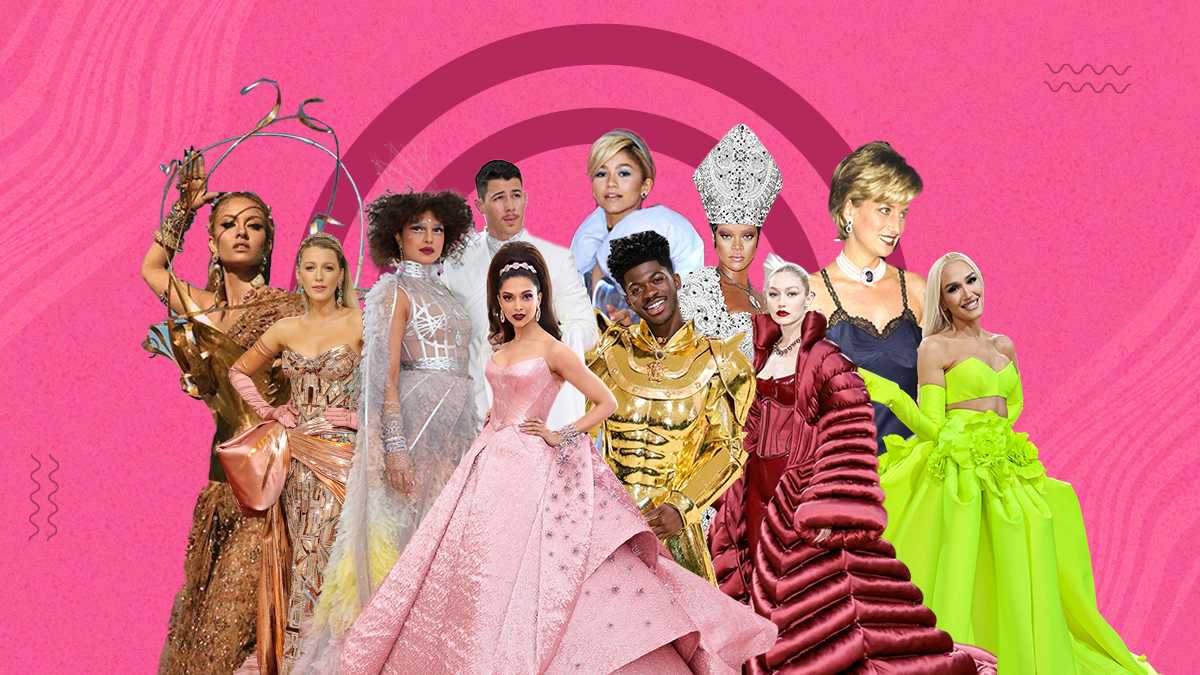
Oddly Obsessed With The Met Gala: Decoding The Fashion Frenzy on The First Monday of May
The first Monday of May, causes mayhem at the lifestyle desks of media outlets. It's the day the Met Gala, a fundraiser for the New York City's Metropolitan Museum of Art's Costume Institute is held every year. A closely guarded guest list supervised by Anna Wintour, Editor-in-Chief of Vogue; themed dramatic costumes; and soaring costs of tickets make it a larger-than-life, star-studded celebration. And it’s always a night of fashion frenzy. But does the museum really need “funding” or does the event serve some larger purpose? What about it grabs eyeballs and, despite having no skin in the game, why are we so obsessed with it?
This is our series Oddly Obsessed, where we try to decode whacky Internet trends, sensations, and pop culture phenomena that the world can’t seem to get enough of.
Started in 1948, it was a usual annual event for the first few decades, without much brouhaha. Attendees included fashion and art industry veterans from New York. It started gaining cultural popularity, particularly after Diana Vreeland, the then Editor-in-Chief of Vogue, came on board as a consultant to the institute. Anna Wintour took on the reins in 1995.

Since 2005, the date has been set: The first Monday of May. The only exceptions were caused by the coronavirus pandemic. It was cancelled in 2020 and was held in September 2021. 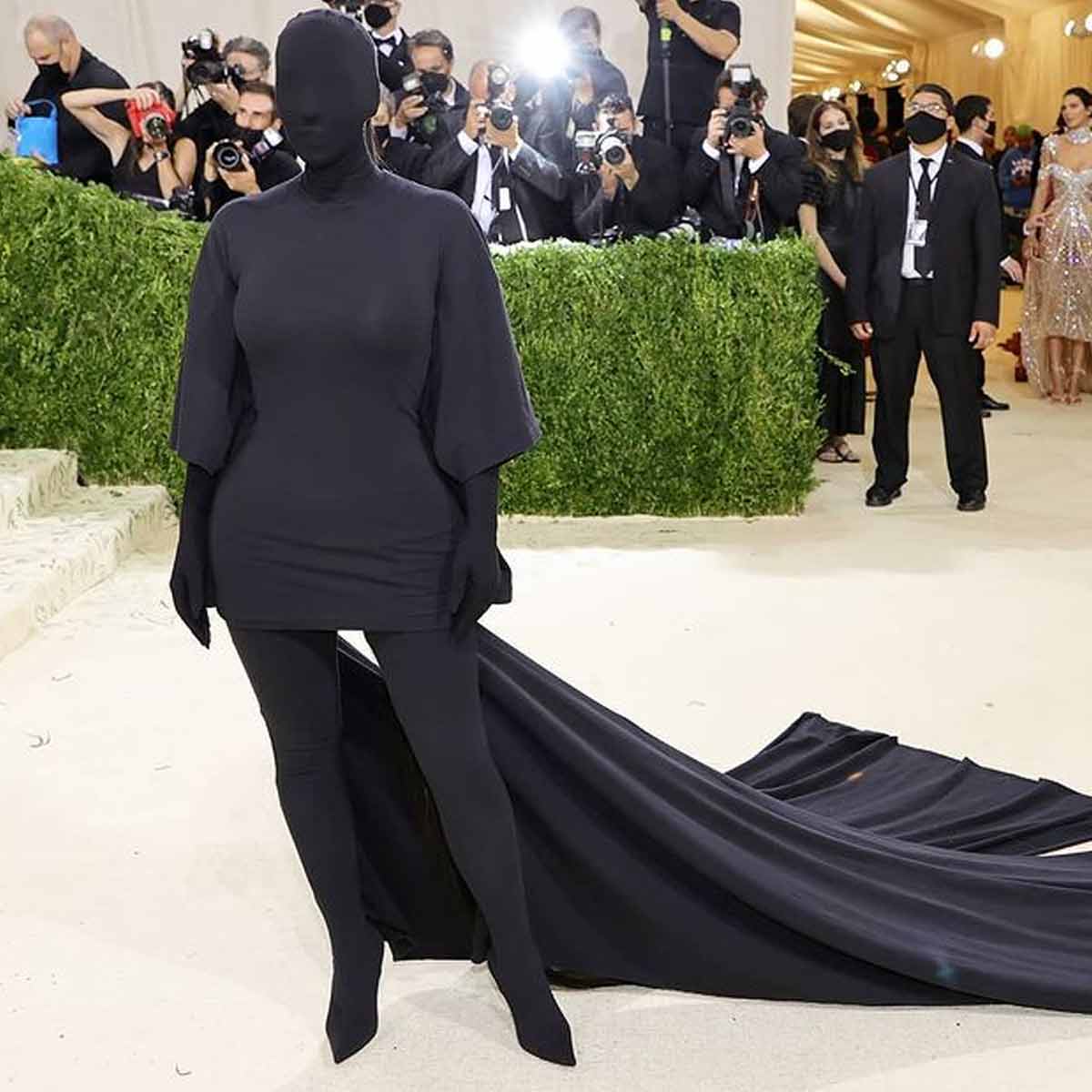
Such is its cultural cred now that the biggest names in the entertainment industry team up with the biggest designers to create looks that become talking points for weeks, sometimes even years! (Remember the never-ending memes about Kim Kardashian’s all-black Balenciaga outfit that covered every bit of her body, literally from head to toe?)
1
2
3
4
Every year since its inception, what the Met Gala has done successfully is make sure that the ‘who’s invited’ buzz begins way ahead, headlines are created, and the fashion is not just discussed but dissected, dissed disdainfully, or praised to the moons. There are premieres, launches, parties, after-parties, and red carpets happening around the year. Yet, it's the Met Gala carpet that draws more attention than others combined. All of this, when we only see the red carpet looks when the celebs enter, and have no idea of what goes on inside, and what the main event even looks like.
“The gala in my opinion uses two approaches,” says Dr Nagma Sahi Ansari, Assistant Professor, NIFT Kolkata, “First, focusing on a theme around art that is philosophical or historically relevant. That opens up a myriad of interconnected inspirations between disciplines and attracts creators and audiences. Second, it works towards trendspotting, aiding the cyclic nature of fashion history which re-memorialises ‘fashion moments’.”
A part of why the gala sustains its position as the pinnacle of fashion, art, and culture, is through the creation of an aura. This aura even surpasses the individuals creating, curating, covering, and attending the event. As for our obsession, it raises questions about celebrity culture itself; about how, despite just sitting in our homes swiping on the looks and the commentary, we play the biggest role in keeping the gala relevant.
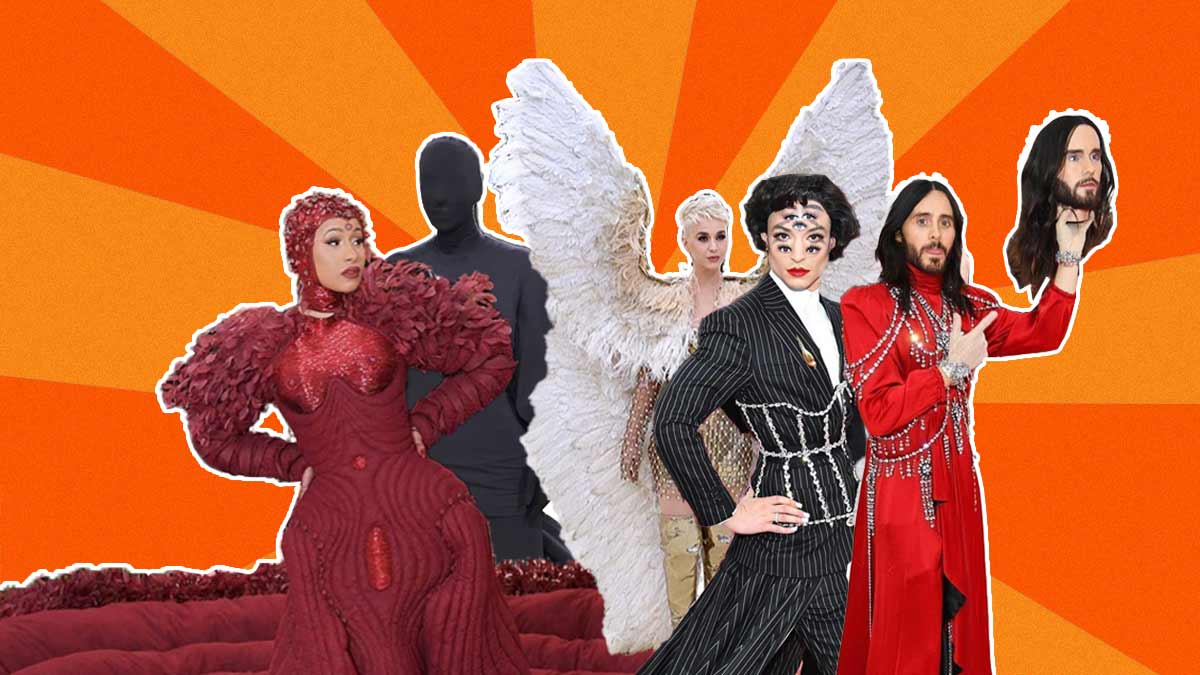
2024 Edition: Theme and Dress Code
In 2023, Alia Bhatt made her debut. She was joined by Priyanka Chopra, for whom the Met Gala has a special place as it was on this carpet that she and her then beau, now husband Nick Jonas made their first official appearance together.
The theme this year is "Sleeping Beauties: Reawakening Fashion." The dress code for it is "The Garden of Time", with fashion enthusiasts predicting that we'll see plenty of florals on the red carpet during Met Gala 2024.
With Vogue’s Anna Wintour, the event is co-chaired by actor Zendaya, actor Chris Hemsworth, rapper and singer Bad Bunny, and actor and singer, Jennifer Lopez.
Also Read: Metropolitan Museum Of Art: All You Need To Know About The Largest Museum In New York City
The Aura: Secretive and Exclusive
Nobody other than the privileged attendees really knows what happens inside the event. The Oscars night comes close to this one as one of the most anticipated nights of the year, but, after the red carpet at the Oscars, everything else too gets live-streamed for everyone. For the Met Gala? You’ll have no idea, unless invited. The action on the carpet is all you get to see.
Aura, after all, is a lot about secrecy.
The event has a strict no-phones and no-social-media policy, which was imposed in 2015, to ensure guests’ “security and enjoyment of the event”. It was perhaps a reaction to the events from the year before, which included designer Cynthia Rowley secretly taping some bits with a GoPro camera in her purse. Not strictly from the event, but a clip from an elevator post from the Met Gala afterparty also went viral in 2014, showing singer Beyonce’s sister Solange physically attacking the former’s husband, rapper-producer Jay Z.
Since then, celebs have resorted to taking infamous bathroom selfies. The restroom seemed to be quite the party hotspot after pics showed several celebs like Kim K, Kendall Jenner, Dakota Johnson, and Bella Hadid smoking inside.
This photo is like taken at a college party except for the fancy dresses #metgalapic.twitter.com/wwiRCjre6x
— elif (@victuuris95) May 2, 2017
Some say there’s usually a performance, besides the guests exploring the museum, mingling, and networking, and then a sit-down dinner. Also among the secret glimpses was this video of Tom Hiddleston, (most famous as Loki from ‘Avengers’), and global pop sensation Taylor Swift dancing to the tunes of The Weeknd.
View this post on Instagram
Clothes and Controversies
At the heart of the hype, though, is extravagant fashion, with top designers dressing up top celebrities in keeping with the annual theme.
Changing colours and designs in the course of one red carpet walk has been one of the most used tropes in dramatic outfit reveals. In 2019, singer-actor Lady Gaga changed four outfits in 15 minutes during the camp-themed evening: From a voluminous hot pink dress with a long cape, to the good old LBD, then a body-hugging spaghetti dress, and eventually a black sequinned bikini with fishnet stockings. In 2022, actor Blake Lively untied a bow on her copper dress to change it into a shade of aqua. Rapper Lil Nas wore three Versace outfits to the 2021 Gala – an embroidered robe, a metallic gold armour suit, and a skin-tight catsuit at the end.
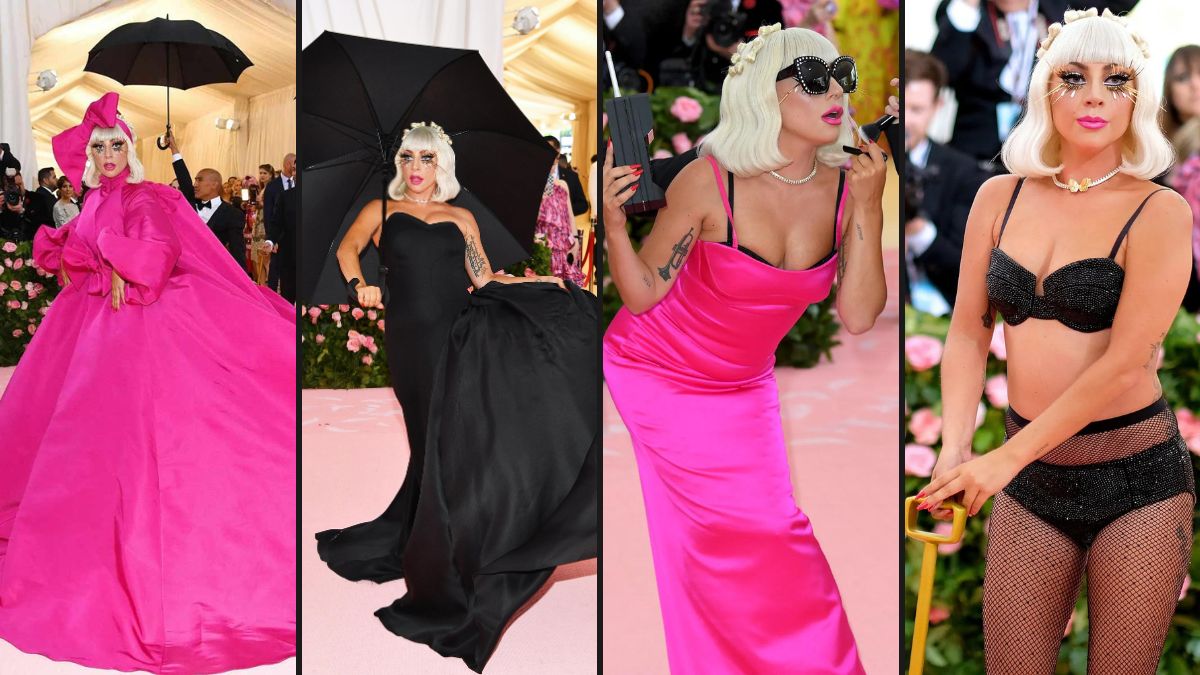
Never-ending capes that sweep the stairs have been staples (and sparked innumerable memes). Rihanna’s sunshine yellow dress in 2015 to Cardi B’s oxblood gown were standouts, with both singers sparking countless jibes.
Celebrities also get creative with their accessories. Jared Lato, the actor known for his varied gigs and methods, in 2019 carried a life-sized replica of his own head in his hands, and pop empress Madonna in 2017 carried her own bottle-green hip flask of rosé wine to the event. Frank Ocean, the singer-songwriter hailed as an icon of introspection, carried a neon-green robotic baby as his date to the event in 2021.
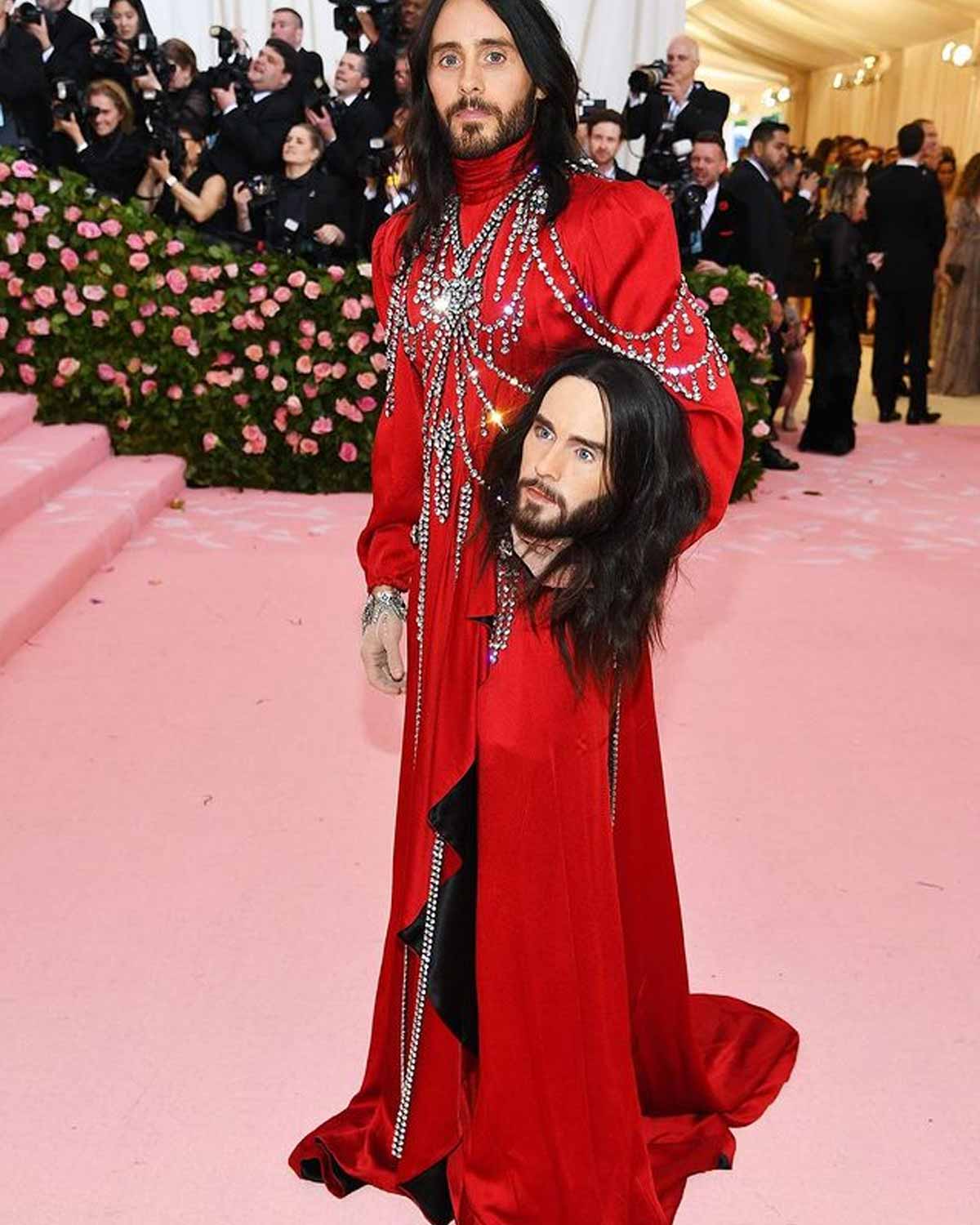
Kim K has taken all her Met Gala outings seriously and sported head-turning outfits. Her standout would be the Jean-Louis Marilyn Monroe dress, which Monroe famously wore to sing ‘Happy Birthday’ to US President John F Kennedy in 1962. Kim lost 16 pounds to fit into the iconic dress and dyed her hair blonde to finish the look. It was one of the most controversial outfits, sparking widespread debate among fashion critics. The dress was then returned to where it originally belonged, the Ripley's Believe It or Not! museum.
View this post on Instagram
Princess Diana attended the 1996 Gala in a Dior dress and carried the iconic Lady Dior bag, which the brand reissued in 2022 due to its soaring popularity.
Spunky US lawmaker Alexandria Ocasio-Cortez attended the Met Gala wearing a white gown with the words ‘Tax the rich’ written over it in bright red, sparking allegations of being tone-deaf and “the pinnacle of performative activism”.
India has had its moments too. Business heiress Isha Ambani has been there too, besides actors Deepika Padukone and Priyanka Chopra, sashaying down the red carpet donning clothes by global designers. The standout, however, would be philanthropist Natasha Poonawalla, who wowed the audience in a collaborative golden outfit by Sabyasachi and Schiaparelli.
View this post on Instagram
Does the Museum Need Funding?
The gala has reportedly raised eight-figure sums consistently for the Costume Institute. In 2022, the event raised $17.4 million, according to reports.
While most guests attend by invitation, some muses attend as plus-ones of designers, and some attend when brands buy tables and send their representative celebs to the event. In its first year, 1948, when the gala was started by fashion publicist Eleanor Lambert, tickets were 5 dollars each. This year, seats reportedly cost $50,000, which is a significant upshot in comparison to last year's $30,000. However, reports suggest that even if a brand buys a full table, Anna Wintour still personally has a say in who attends and who doesn’t.
Given the stature and worth of attendees, wouldn’t the host museum still be a profitable organisation based on donations alone, even without the glitz and glamour?
Beyond the money, the Met continues to hype up and conduct the gala, establishing its stronghold on cultural conversations. It’s an event that sparks emotions -- jealousy, glory, curiosity, controversy, and more. It cements the gallery’s position of power. It’s touted to be the confluence of fashion, art, culture, and glamour, and this aura helps the museum attract both money and attention.
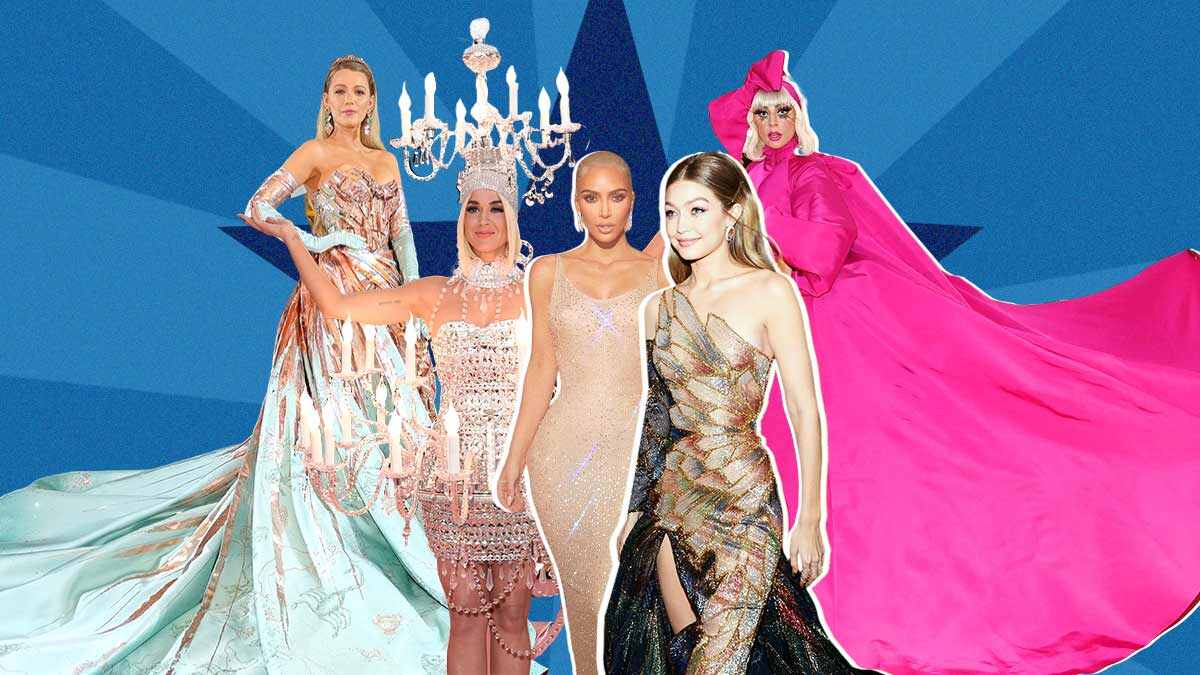
The event ensures that the Met Gala is regarded as fashion’s premier night of sorts, and thus weaves a narrative of secrecy and fun themes, creating the need for designers to outdo themselves every year.
Psychology of Curiosity
A report in a publication called PopNeuro, founded by a neuroscientist and a neuromarketer, relates our own psychological wiring to the events’ success. It argues that the whole aura that the event creates by generating a buzz in the days leading up to the event causes all of us to take note. The writers highlight the “information gap” theory, which is the same marketing tactic used when clickbait-y headlines are written, which ensures a viewer’s interest is piqued.
The Met Gala does this by the creation of the aura, which reveals only so much about the event, without giving a full view. Starting from the guest list itself, the event creates a sense of mystical, hard-to-attain glamour around it.
Also read: 5 Most Outrageous Looks Served At The Met Gala Over The Years
“Historically looking at how the masses have followed the authority (aristocrats) for fashion inspiration (as expression was refined in the privileged sections of society); we see a similar phenomenon when a celebrity (a form of authority) is now wearing art as expression,” says Dr Nagma Sahi Ansari from NIFT Kolkata.
View this post on Instagram
“It’s also the very desirability of both: celebs who already have an image phenomenon and art as a wearable experience that eludes many. The rise of social media has only helped with the spontaneity of the commentary,” says the professor.
The clothes, in short, are pieces no ordinary person can ever wear. To that, add names of the biggest designers, drama, and flamboyance, and you have a cocktail of uncertainty and excitement that sparks curiosity like no other.
Given the numerous style ‘moments’, memes, and memories that the appearances generate, fashion enthusiasts have no option, but to tune in to the show.
Celebrity Culture
The reason the Met Gala remains relevant can widely be attributed to why celebrities at all stay relevant. It’s because we can’t seem to look away from them.
Their outfits aim to shock, surprise, and become talking points.
Being invited cements their position as important enough, and creates a phenomenon of status envy among the rest.
View this post on Instagram
While some take to the red carpet to create a fashion moment, others use it for their activism. Overall, the red carpet thus becomes the key element for this event and assumes a role much larger than any other ordinary red carpet.
Whether it’s a method of escape from reality, an antidote for boredom, or just something to pass the time, our own obsession with celebrities and their lives, is where they derive their wealth and fame from. In the same tone, the Met Gala capitalises on the same: our own interest in it.

“We exist in a world of social media that has turned us from consumers of media content to creators of the same. Many influencers and opinion leaders constantly want to comment on fashion events as it helps with their creative economy, and social media helps propagate it spontaneously. The network of desirability between celebrities, media channels, influencers, opinion leaders, and media users is a complex web that creates an invisible demand for dissecting each fashion phenomenon,” adds Dr Ansari.
With social media discourse driving most of the cultural conversations today, add to all the above, a heavy dose of FOMO and you can’t help but tune in early on Monday morning to check out what this year’s red carpet is witnessing.
Herzindagi video
1
2
3
4